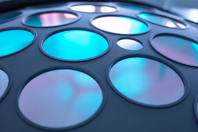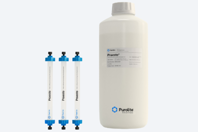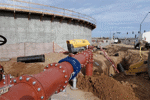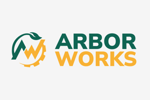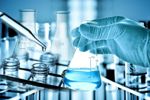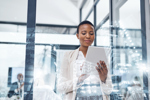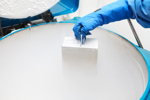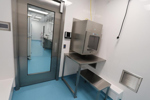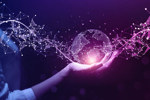Catalysts
PRODUCTS
-
Optical filters enhance system precision by selectively transmitting or blocking wavelengths, supporting machine vision, spectroscopy, fluorescence microscopy, and medical imaging with customizable solutions.
-
THUNDER Imager EM Cryo CLEM
In-depth understanding of cellular structural biology
The THUNDER Imager EM Cryo CLEM is a cryo light microscope featuring opto-digital THUNDER technology. It provides the imaging data and secure cryo conditions you need for successful experimental investigations concerning structural biology. Precisely identify cellular structures of interest thanks to high resolution, haze-free imaging with THUNDER technology, then transfer the specimen seamlessly to your EM.
-
S APO Greenough Stereo Microscope
Save up to 20% inspection and rework time*
Continuously improving production, keeping defect rates low, and fulfilling customer requests in order to stay competitive can be very challenging. Leica has developed the S9 stereo microscope series to help you cope with these challenges. With this generation of Greenough stereo microscopes operators will be able to reveal details faster as they spend less time having to adjust the microscope.
*compared to the standard industrial stereo microscope S6 from Leica
-
Explore Biozen LC Portfolio
With a new titanium BioTi™ biocompatible hardware to minimize priming, four particle platforms for optimal versatility and nine particle chemistries to maximize selectivity and sensitivity, Biozen UHPLC/HPLC columns are seamlessly designed to bring peace of mind to your analysis of biologics through:
- Charge Variant Analysis
- Aggregate Analysis
- Peptide Mapping
- Intact Mass Intact and Fragment Analysis
- Glycan Analysis
- Peptide Quantitation
- Drug Antibody Ratio (DAR)
- Oligonucleotide Characterization
-
High-capacity resin specifically designed to bind to the CH1 region on monoclonal antibodies for simple purification of bispecifics, fusion proteins and other next-generation therapeutics.
WHITE PAPERS AND CASE STUDIES
-
Eagle Mountain Eases Into Technology Upgrade With Sensus FlexNet EasyLink Solution
Learn how a Utah Water Utility adapted to rapid growth with the help of Sensus.
-
HYMAX Grip Chosen For New Construction Project In Arizona
In 2017, Queen Creek established a Water System Master Plan as a framework for water infrastructure improvements including wells, reservoirs/storage tanks, and booster pump stations.
-
ArborWorks Success Story
ArborWorks, a vegetation management firm, faced a core challenge in identifying a software partner that would bring their company into a fully digital environment, using field crews on mobile devices versus paper.
-
Saving Dollars And Crushing Odors: How SulFeLox® Outperformed Calcium Nitrate In Tackling H2S
Faced with increased chemical prices, a large facility in Tennessee wanted to trial SulFeLox as a potential alternative to their BIOXIDE program.
-
Two Years And Counting: The AFC SEMPER RPM Offers Aqua Insight Into Pressure Transients
It’s been more than two years since Aqua Pennsylvania began using an eye-opening technology, the AMERICAN Flow Control SEMPER Remote Pressure Monitor (RPM), to identify pressure transients and reduce main breaks and non-revenue water.
-
Difco TC Yeastolate Ultra-Filtered (TCY UF) In Scale-Up Optimization
Explore how Difco™ TC Yeastolate ultra-filtered (TCY UF) enabled over 100% improvement in titer for CHO cell culture through feed optimization and bioreactor scalability in a real-world application.
-
NeuraLace Doubles Clinical Trial Enrollment & Improves Participant Compliance With EDC & ePRO
Find out how one company dedicated to producing innovative non-invasive chronic pain therapies was able to engage its patients in new ways.
-
Ensuring Reliability And Patient Safety With XiltriX
Protect the integrity of your therapies and ensure patient safety by investing in reliable, real-time environmental monitoring systems that proactively address operational vulnerabilities.
-
Clinical Phase Manufacturing With A Self-Contained Cleanroom Facility
Explore the development of a mobile Biosafety Level 2+ (BSL-2+) facility adhering to cGMP for early-phase clinical trial manufacturing.
-
A Universal Solution For Ultra Cold Storage
Learn how an ultra-low temperature freezer standardizes cold storage, increases storage density, and ensures stable temperatures to achieve compliance and sustainability across packaging formats.
-
Tank Terminal Wastewater Treatment
In this case study, explore the results of Aquacycl's installation of a pilot-scale BETT system to treat a side-stream of wastewater from a tank terminal operator's facility.
-
Efficient Data Aggregation And Oversight: A CRO Success Story
Explore how a full-service CRO and tech-driven life sciences provider streamlined data aggregation and clinical trial oversight, yielding significant time and cost savings.
NEWS
-
Tuesday: EPA Leaders And Congressman Soto To Announce $188M Loan To Upgrade And Expand Water Services In Central Florida8/9/2024
On Tuesday, August 13, 2024, the U.S. Environmental Protection Agency (EPA) will announce a $188.3M Water Infrastructure Finance and Innovation Act (WIFIA) loan to Toho Water Authority in central Florida.
-
Cleanwater1 Announces Acquisition Of Velocity Dynamics, LLC1/3/2024
Cleanwater1 today completed the acquisition of Velocity Dynamics, a leading solutions provider of branded, proprietary dry and liquid feed systems for the optimization of chemistry in water and wastewater utilities and industrial plants.
-
Infrafon SmartBadge, A New Disruptive Device Between Smartphone And SmartCard4/2/2024
After 3 years of ambitious development, Infrafon team is proud to present world´s first interactive security SmartBadge featuring high resolution touch enabled epaper and unparalleled radio communication features.
-
Be Part of Photonics Future: CIOE 2025 Visitor Registration Live Now!4/9/2025
The 26th China International Optoelectronic Exposition (CIOE 2025) is set to take place from September 10–12, 2025, at the Shenzhen World Exhibition & Convention Center, spanning 240,000 square meters of exhibition space.
-
The Fire That Powers The Universe: Harnessing Inertial Fusion Energy12/1/2024
It was a laser shot for the ages. By achieving fusion ignition on December 5, 2022, Lawrence Livermore National Laboratory (LLNL) proved that recreating the “fire” that fuels the sun and the stars inside a laboratory on Earth was indeed scientifically possible.
ABOUT
Catalysts
Catalysts work by changing the structure of a molecule or by bonding to reactant molecules causing them to combine, react, and release a product or energy. For example, a catalyst is required in order for oxygen and hydrogen to bond, combine and produce water.
Catalysts increase the rate of chemical reactions. Unlike a reagent that gets consumed as apart of the chemical reaction, catalysts do not get consumed in the reaction. They can actually participate in multiple chemical transformations.Catalysts can be organic, synthetic or metal.
All processes need energy to take place. Processes require a very high level of energy in order to spark or start if a catalyst isn’t present. When a catalyst is present the amount of energy required to spark the reaction is lowered and that makes the reaction happen faster and more efficiently.
Catalytic effects vary depending on other substances present that are a part of the chemical reactions. There are certain substances that can inhibit the effectiveness of a catalyst like poisons, and other substances that promote or increase the effect of the catalyst. Inhibitors or negative catalysts are very important in medicine to treat mental illnesses, high blood pressure, cancer and many other diseases.
Catalysts are often used to help crack, or split, larger organic molecules like hydrocarbons into simpler molecules. It does this by breaking carbon-carbon bonds. The speed of the splitting process depends heavily on what specific catalyst is used and the temperature. Applications of this technology include oil and petrochemical industries.

